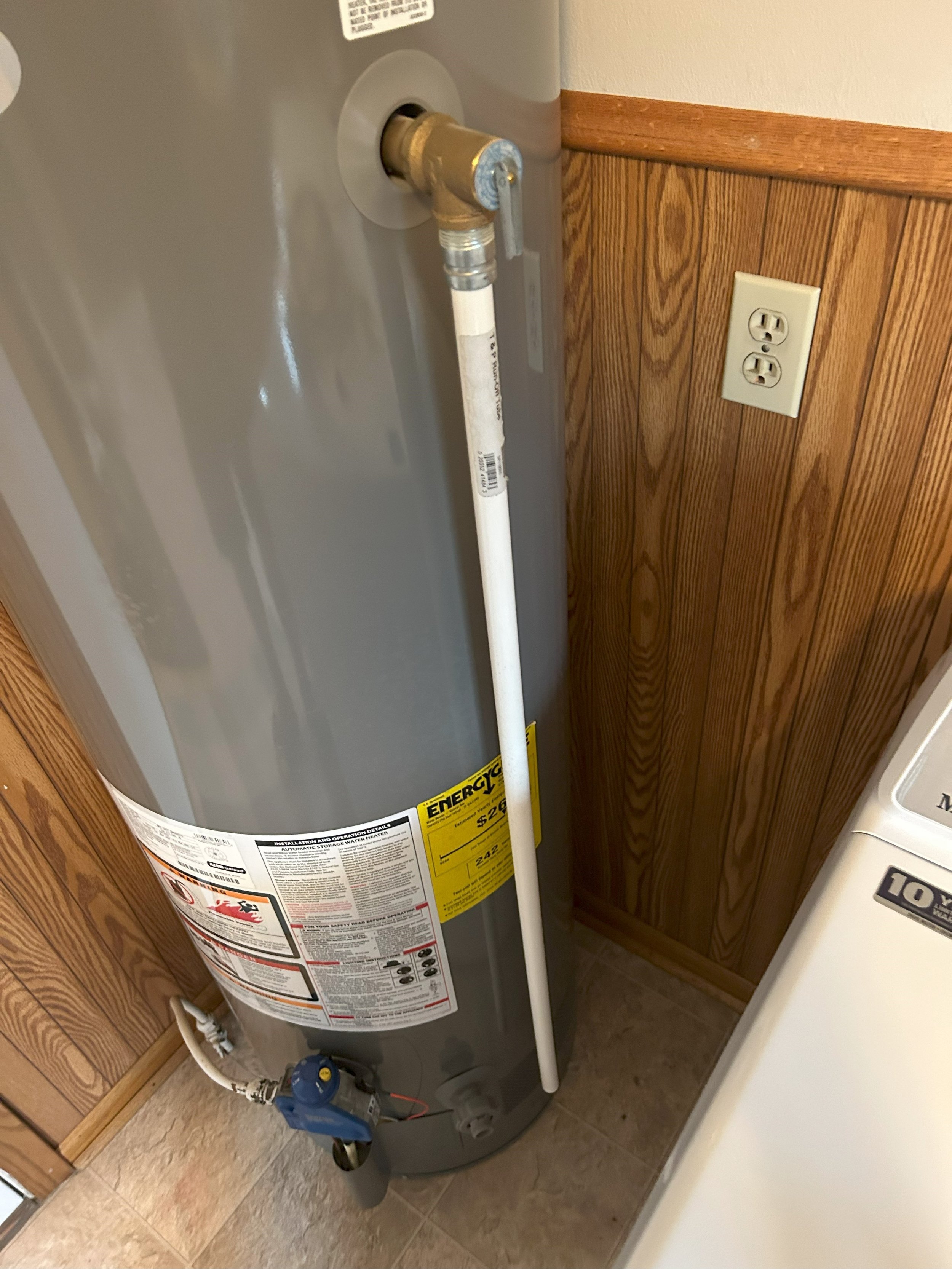Water heaters are a pretty resilient piece of equipment that provides you with hot water for your home. Unfortunately, since they operate pretty much seamlessly, most people completely forget about them. Keeping the safety features of your water heater properly maintained will help to prevent leaks and ensure proper operation in the event your water heater overheats.
Temperature and Pressure Relief Valve (TPRV or TPR Valve)
What is a TPRV?
Your Temperature and Pressure Relief Valve (TPR valve, or TPRV) is a safety feature that ensures the proper operation of your water heater. When heat is added to water, the water vaporizes and expands. The expansion of the water within your water heater creates increased pressure within. In the event that the water gets too hot and the pressure becomes too high, the TPR valve will open and allow that pressure to be relieved.
A water heater can explode and launch if the internal pressure gets too high. This is a very rare occurrence to have a tank explode, but it can happen with defective TPRVs. To demonstrate the potential of an exploding water heater, take some time to watch this video from MythBusters.
If you are at your home inspection, your home inspector will usually explain what a TPRV is and why it is there.
Water heater with TPRV and discharge pipe (right side)
How to test a TPRV
A little maintenance will go a long way toward improving performance and keeping your water heater running safely. Take a little time every six months to perform a few key maintenance tasks, such as checking the water heater TPRV.
· Lift the lever on your TPR valve up and down several times. This should open the valve and allow water to flow out of the drainpipe.
· A reasonable amount of water should flow out of your water heater. If there is no water or barely a trickle, you should have your water heater serviced.
· If water continues to flow out of your discharge tube after you have closed the TPR valve, there may be a piece of debris stuck in the valve. Open and close the valve several times to flush anything that may be blocking it from closing.
Discharge pipe
Your water heater should have a discharge pipe attached to your TPRV. This is designed to direct any steam or water that is discharged down to the floor level.
Confirm that your drain pipe is secure in the TPRV and that it extends down to within 6 to 18 inches of the floor. If your water heater is missing a discharge pipe, make sure to get one installed. If your water heater overheats and discharges through the TPRV without a discharge pipe, water and steam will be blown across the room rather than down to the floor. A missing discharge pipe could result in scalding or burns if somebody happens to be adjacent to the water heater.
Summary
The TPR valve on your water heater is an important safety feature that should be maintained properly. Paying attention to small maintenance items will keep your equipment running properly throughout the years.
At HomePro Inspections, our home inspectors are trained to inspect all areas of the home. TPRVs and discharge pipes are inspected as part of the water heater inspection. Any issues, such as leaking or corrosion, are documented in your home inspection report and recommended for resolution by a qualified professional.
Visit our website to learn more or to schedule your home inspection in the Rochester, Owatonna, and Faribault, MN areas. You can contact us today at (507) 202-8942 or utilize our online “Schedule Now” feature to set up an appointment.


